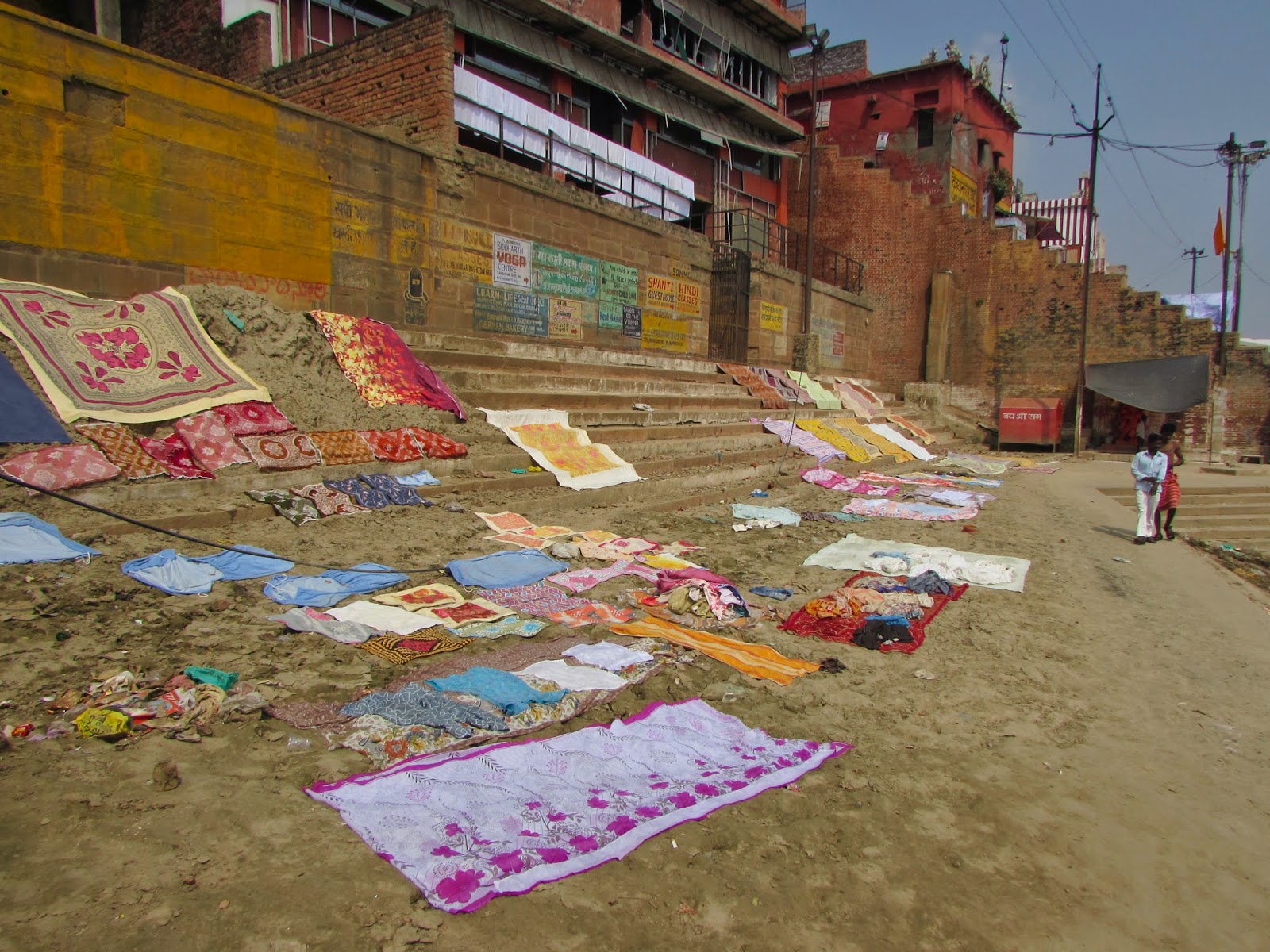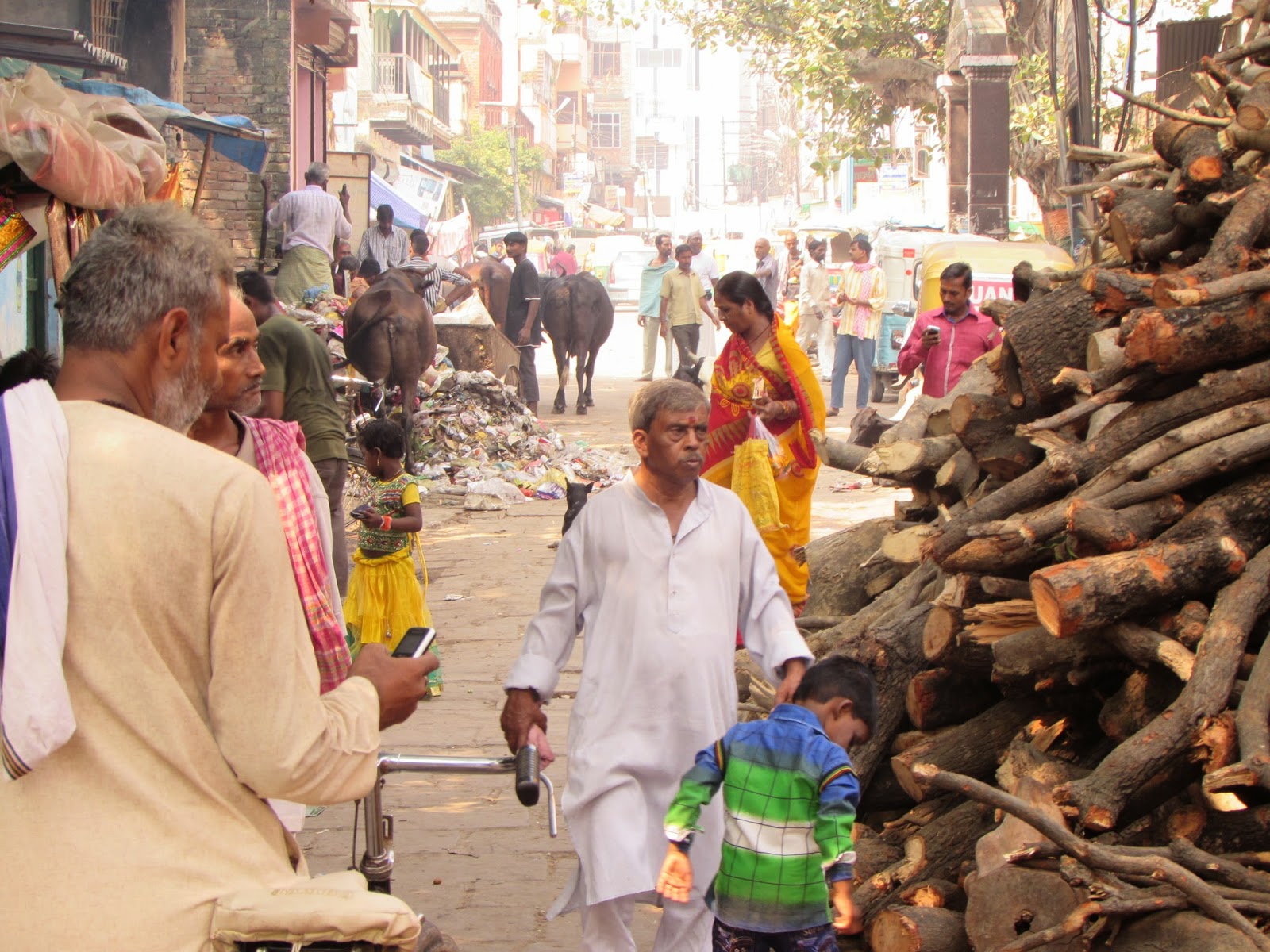
I've been keeping this blog for over two years, and for most of that time I've updated it at a steady pace, rarely documenting anything more than two or three weeks after the event. However, since Angela and I finally made it to the UK towards the end of last month, and since we've been visiting friends and family that I've not seen for two years, as well as doing lots of job-hunting, I've now lost all motivation to finish these remaining blog posts. Well, not
all motivation, otherwise I wouldn't even be writing this. But let's just say I'm too preoccupied by other matters to churn out these things at the rate I once did. I'll finish, eventually. But I don't know if I have the energy to put out more than a few per posts month, and I may not always write them with much depth or clarity of thought.
Now that that's been said, let's move on to Varanasi, which might be the most purely Indian city we visited in India. I say that because Varanasi exemplifies this country's most striking contradiction: that uncanny balance between the sacred and the sickening, between the divine and the downright dirty. People often describe India as a "love it or hate it" place, and this foul-smelling holy city must surely be one of the most polarising travel destinations on the planet. Angela, for one, rarely left our hotel room during our three days there, preferring self-imposed isolation over fly-coated alleyways, trash mountains, and endless faecal matter.
Fortunately, Angela did at least join me for a boat trip along the Ganges River, which must be Varanasi's most rewarding experience. The views along the riverside ghats are like something from a dream, with ethereal figures wandering down the steps and performing strange rituals in the water. At first, you can't help but feel baffled that people so readily bathe in a river that has become utterly stagnated with sewage, chemical waste, and corpses. But then you marvel at the power of faith: all these devotees see is holy water, and to them this city is a gateway to heaven. Hindus believe that to die here brings release from the cycle of reincarnation, and as a result, the atmosphere of death pervades everything. Hundreds of cremations take place along the ghats every week, the old and the sick linger by the river awaiting their last moments on earth, and the buildings and temples are painted in such sombre, shadowy tones that one can imagine the afterlife itself bleeding into the city.
 |
| It was a long, overnight train ride from Agra to Varanasi. |
 |
| We left Agra during some random festival (India has so many, even our driver wasn't sure which this was). |
 |
| We headed to the train station pretty early since we were worried we might encounter a lot of weekend traffic (we did on the way into the city, after all). We said our thanks and goodbyes to our driver, Bubloo, who'd taken us all around Rajasthan the past two weeks, and then prepared ourselves for a long wait at this dinghy train station an hour outside of Agra. |
 |
| Finally our train arrived, and we settled down in our reasonably comfy beds. |
 |
| Passing a village early the next morning. |
 |
| Bleary-eyed, we arrived at a station just outside of Varanasi, and took a tuk-tuk driver to the city. |
 |
| Our hotel had a nice view over the Ganges. |
 |
| Angela rested at our hotel while I explored the labyrinthine alleyways of the old city, where many of the locals lived and worked. Around every corner was an interesting sight. |
 |
| The alleys were sometimes too cramped for humans and cows to coexist! |
 |
| Heading out on to the ghats. |
 |
| Back into the colourful, action-packed alleyways. |
 |
| Looking over a fence, I found this park that seemed like a green oasis of nature and cleanliness... |
 |
| ...aaaaaand back to the trash-filled streets. |
 |
| During dawn, we went to the river to do a boat tour of the ghats. |
 |
| In this picture you can see how filthy the water is. |
 |
| Sometimes we'd see old people sitting or lying at the ghats, waiting. |
 |
| These men were carrying a human body up the steps to be cremated before it's put in the river. |
 |
| Barely a hundred metres upstream from the corpses, people bathed and brushed their teeth in the river. |
Click here to continue the adventure in Part 2!
























































No comments:
Post a Comment